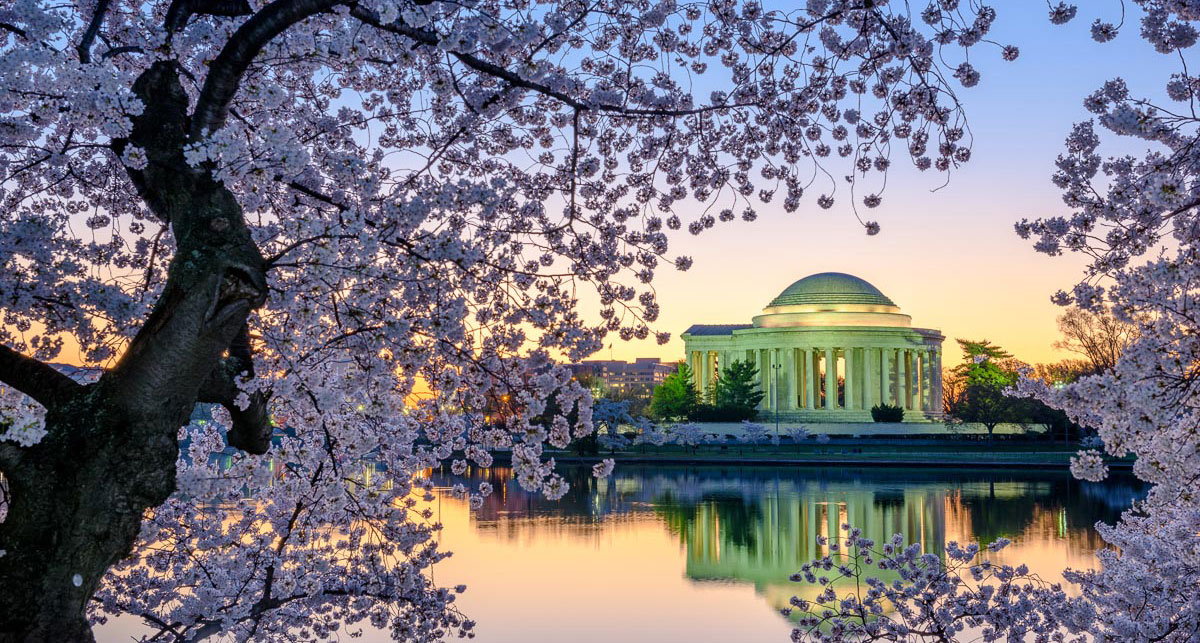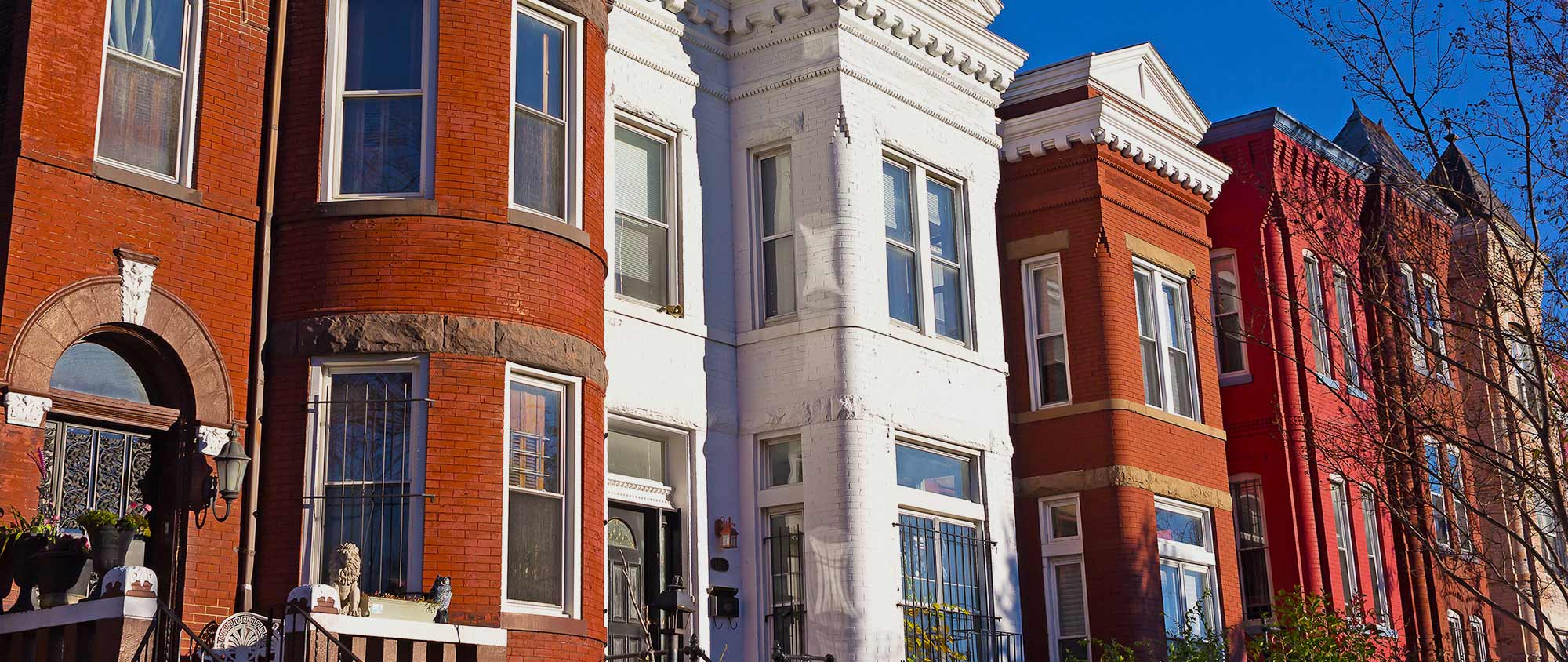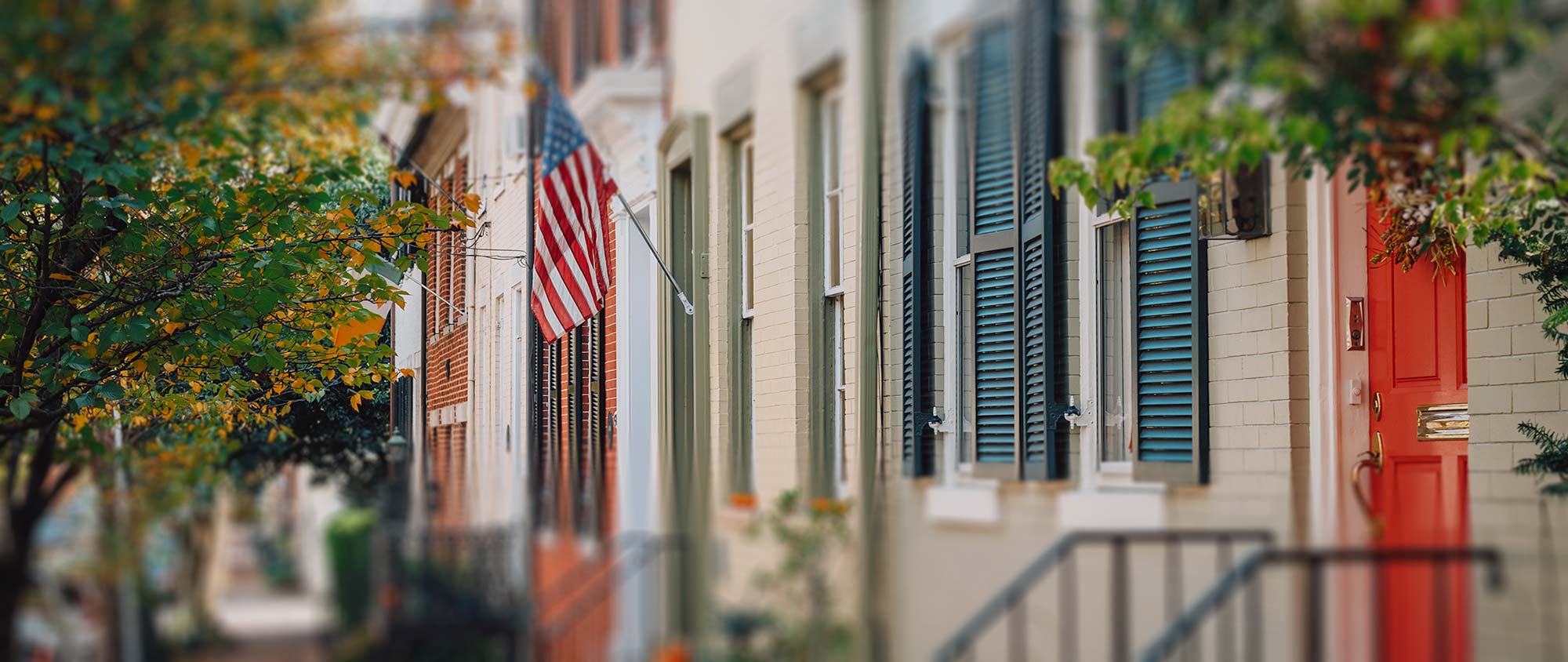

Adams Morgan
This culturally diverse neighborhood is known for its nightlife and eclectic dining scene thanks to all the bars and restaurants dotting the 18th Street corridor. Read more...
Anacostia
Venture into southeast DC and discover Anacostia, a vibrant neighborhood with museums, bike paths and a rich African American history. Read more...
Brookland
DC’s "Little Rome" is awash in Catholic churches and sites, plus a lively arts zone and charming, bungalow-filled streets. Read more...
Capitol Hill
Some of the government’s most powerful edifices – the U.S. Capitol, the Supreme Court and the U.S. House and Senate – make their homes on this famed incline, where Instagram-ready views of the Capitol Dome come at almost every turn. Read more...
Capitol Riverfront
Just south of the U.S. Capitol, this vibrant neighborhood on the Anacostia River is home to Major League Baseball’s Washington Nationals, watery diversions like kayaking and a booming restaurant scene. Read more...
Columbia Heights
Hispanic culture, a jumbo city park plus cool bars and restaurants draw locals and visitors to this upper northwest hot zone. Read more...
Congress Heights
Cheer on exciting sports action, catch a concert and plié for ballet in DC's Congress Heights neighborhood. Read more...
Downtown
Downtown DC is considered the center of the nation’s capital because of its close proximity to popular attractions, a wide range of cultural experiences, national retail chains and noteworthy dining options. Read more...
Dupont Circle
You might find impromptu yoga, pick-up games of chess and dog-walking locals at this social circle, which anchors its neighborhood namesake. Read more...
Foggy Bottom
Culture vultures, diplomats and outdoor enthusiasts dig this riverside neighborhood best known as home to the Kennedy Center and the State Department. Read more...
Georgetown
The perfect intersection of historic charm and upscale modernity happens where M Street meets Wisconsin Avenue in the heart of picturesque Georgetown. Read more...
H Street NE
H Street NE, a dynamic one-and-a-half mile stretch in Northeast DC, is known for its nightlife, restaurants, pop-ups, festivals and communal atmosphere. Read more...
Ivy City
You’ll find a high concentration of craft distilleries, unique concert venues and even agricultural wonders in this historic industrial zone that is experiencing a modern-day renaissance. Read more...
Logan Circle
Find hot restaurants, hip decor, shops and performance venues among historic architecture. Read more...
Maryland
Both DC’s attraction-loaded Maryland suburbs and storied nearby cities like Frederick, Baltimore and Annapolis are within driving distance of the nation’s capital. Read more...
Mount Vernon Square
This historic city square and neighborhood masterfully blends DC’s past and present, perfect for business and pleasure. Read more...
National Mall
There’s nothing like arriving on the National Mall for the very first time. Read more...
NoMa
In this up-and-coming zone, find food hall Union Market, trendy restaurants and historic sites like Gallaudet University. Read more...
Penn Quarter & Chinatown
Satisfy your appetite for hip restaurants and culture in this diverse ’hood where museums like the National Portrait Gallery and the International Spy Museum keep company with eateries by celebrity chefs. Read more...
Petworth
Take a look inside Petworth, a close-knit residential neighborhood with local draws that beckon for you to explore. Read more...
Shaw
Find cool local shops, foodie restaurants, concert halls and African American history in this rapidly developing downtown zone. Read more...
Southwest & The Wharf
The Southwest & The Wharf neighborhood is a must-visit for experiencing the arts and local history, as well as The Wharf's many restaurants, shops, concert venues and on-the-water activities. Read more...
U Street
The part of the city that never sleeps, U Street stays up late and knows how to have a good time. Read more...
Upper Northwest
The tree-filled upper northwest neighborhoods of DC offer historic homes, the National Cathedral, cozy restaurants and great shopping. Read more...
Virginia
The Virginia towns and counties surrounding DC hum with culture, nature, shopping and history. Read more...
Woodley Park
This green zone in northwest DC offers access to Rock Creek Park, the National Zoo and historic hotels. Read more...
Info from https://washington.org

What Bert Has To Say About Washington-Arlington-Alexandria Metro Area
https://www.bestplaces.net/city/district_of_columbia/washington
It would be an understatement to say that the nation’s capital is a unique place. The centrally located National Mall is an urban planning gem, with excellent open spaces, walking paths, and major monuments in a classic architectural style. Lining the mall is the Smithsonian museum complex, probably the best set of museums in the world in a single location. In reality, the whole mall setup is a museum in and of itself and a major destination for locals and visitors alike. Numerous government offices and first class hospitality venues surround the mall. To the northwest of the mall, but still within the city limits, lies the upscale residential and commercial enclave of Georgetown, home to Georgetown University, George Washington Hospital, and a variety of entertainment and nightlife amenities. But not all of the D.C. central city glitters; to the north and east in particular lies a considerable expanse of socioeconomically mixed neighborhoods and areas of urban decay.
For most prospective residents, the real story of the D.C. area is the array of residential and commercial corridors surrounding the city on all sides. Just south across the Potomac in Virginia lies Fairfax County, a built-up area including the satellite city of Arlington and the larger suburbs of Alexandria, McLean, and the more upscale Fairfax. This is hardly the whole Northern Virginia story – the sprawling D.C. suburbs spread for miles into the one-time countryside, south into Prince William County and especially west into Loudoun County along the Dulles Airport corridor.
The super-suburbs (especially west) include such names Reston, Herndon, Ashburn and extend to Leesburg, all very large and mostly new residential suburbs, some well-planned and some not. Extensive commercial and corporate developments lie along the corridor with new-economy names like AOL, Nextel, Siebel, Oracle, IBM and Accenture mixed with numerous other businesses and government contractors. Employment in the greater DC area is strong in general and particularly strong in this zone. Many do commute to the DC area proper but more often commute to other places in the suburbs.
The outlying northern Virginia suburbs in most ways meet the definition of “exurbs,” where people benefit economically from the city and may use its airport, but have little daily connection with it. Areas east of the city are more industrial and generally uninspiring, while the Maryland suburbs along I-270 northwest through Bethesda, Silver Spring, Rockville, and Gaithersburg have been split off into another metro area.
The dominance of the U.S. Government and its impact on the local economy and culture cannot be overstated. Not surprisingly, the area has a high percentage of well-educated citizens. But a significant number of educationally and economically disadvantaged people are also within its borders. Arts, entertainment and cultural assets in total are among the best. The Cost of Living Index is high but not exorbitant for this type of area. Housing options and costs have escalated in recent years, but there are signs of softening. Growth and sprawl is a major concern, with development and business activity flung farther out into the countryside and even across venerated Civil War historic sites. Public transportation works well as far out as Dulles Airport and northwest into Maryland, but whether it relieves traffic issues further out is yet unclear.
Bottom line - Washington, D.C. and its Virginia suburbs stand alone as a U.S. city and metro area with unique beauty, plenty to see and do, an active and intellectually stimulating lifestyle, and a wide variety of employment and living options. It does have downsides, and they are becoming strong enough even in the suburbs to negatively impact the ranking. The D.C. area isn’t for everyone, but most who live there are glad they do.
Washington lies at the western edge of the mid-Atlantic Coastal Plain, about 50 miles east of the Blue Ridge Mountains and 35 miles west of Chesapeake Bay. The immediate area is flat with rolling hills starting just outside the city to the northwest and southwest. The climate is coastal continental with a subtropical influence. Summers are warm and humid with occasional hot, sticky spells and thunderstorms. Because of the inland location, summer heat and humidity aren’t offset by sea breezes. Winters are cold but not severe. Precipitation is uniformly distributed throughout the year. Potomac floods can result from heavy rains, sometimes augmented by snowmelt and high tides. Normal winter snowfall is 18 inches, but occasional heavy snows of 25 inches or more do occur. First freeze is early November, last is April 1.


